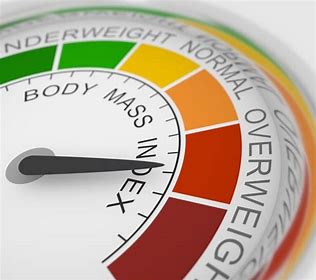Are you a healthy weight? To get an answer, you’re likely to
measure your body mass index or BMI. But how helpful is this?
Your health can be gauged by a simple formula we are told.
Divide your weight in kilograms by your height in metres squared (kg/m2) and
you have your BMI.

This can be then used by your doctor, nutritionist, or your
fitness instructor to assess if your weight is ‘normal’ or ‘healthy’ for your
height or whether you are hovering close to being classified as ‘overweight’,
‘obese’ or ‘underweight’.
BMI is used around the world to measure obesity and give an
estimate of our overall disease risk. There is an assumption that a normal BMI
equates to good health, while scores in the ranges above or below suggest your
health is at risk.
Is there a link between BMI and health?
BMI does have value. Being quick, simple and cheap, it can
quickly identify people who may be at risk of conditions such as type 2
diabetes or heart disease and be a useful starting point for further
investigations.
But many health professionals, backed by a growing body of
evidence, are now questioning the reliability of BMI as a marker of health.
A 2016 study published in the International Journal of
Obesity looked at BMI as an indicator of heart health. The research team
checked individual BMI results against other indicators, including cholesterol
levels, blood pressure and insulin resistance. What they found was surprising:
- 30 per cent of people in the normal BMI range were at above-average risk of heart disease.
- 48 per cent of ‘overweight’ and 29 per cent of ‘obese’ people were heart-healthy.
What else can’t BMI tell you?
- The amount of fat on your body
In adults who have stopped growing, an increase in BMI is
usually caused by an increase in body fat, but there are many exceptions to
this.
“Having a high ratio of muscle to fat is liable to put you
into the ‘overweight’ category,” says Canadian dietician Abby Langer. “Muscle
weighs more than fat, and if you’re solid and muscular – think athletes or
weightlifters – BMI won’t recognise that; it will just categorise you as
overweight when you’re not.”
Body composition, including your per cent body fat or muscle
mass, can also vary by race and ethnic group.
Where you store your fat is critical to your health. Body
fat stored around the abdomen (an ‘apple’ shape) is more dangerous than fat on
your hips or thighs, but BMI won’t tell you where your fat is located. The
‘apple’ shape is associated with an increased risk of heart disease, stroke and
type 2 diabetes, and you can have a BMI in the ‘normal’ range but carry risky
amounts of belly fat.

Your risk of disease doesn’t automatically increase with
weight. The normal ranges don’t work so well for predicting health risks in
older adults, who don’t appear to have a greater risk of death when their BMI
is in the ‘overweight’ category.
What are the alternatives?
Your waist circumference is a better predictor of health
risk than BMI, because it can indicate how much fat is stored around your
abdomen, where it is potentially more dangerous.
Both waist circumference and BMI can be good starting
points, but other measurements will give a fuller picture of health risk.
Lifestyle factors such as smoking, activity levels, diet and stress, along with
blood pressure, blood sugar and cholesterol levels should all be considered.